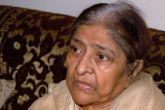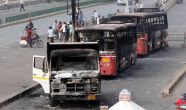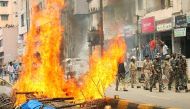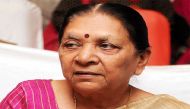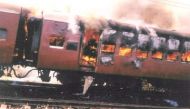2002 Godhra Riots: 15 years pass, but the stain will never leave Narendra Modi
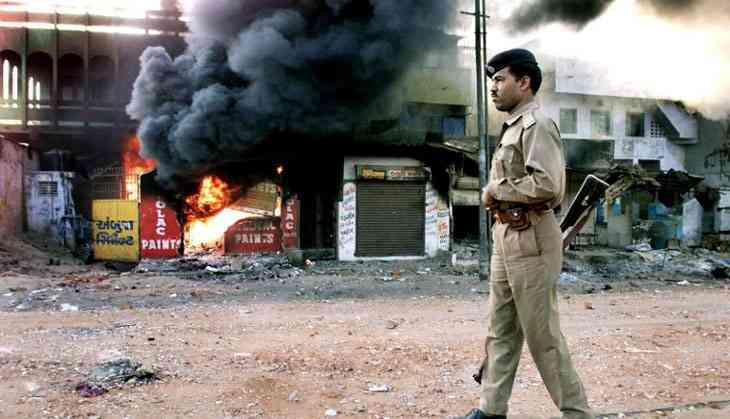
27 February, 2002, was a day that would change the landscape of Gujarat forever. While some may argue that the incidents at Godhra that fateful February were merely the culmination of a long, simmering build up, it was the events of this day that set in motion months of violence that would rewrite the state's DNA.
As communal riots erupted across the length and breadth of Gujarat, state machinery was paralysed and the nation watched on as scores were murdered in waves of brutal violence that raged on for what seemed like eternity.
Scarcely 10 months on, Narendra Modi, the then-CM of Gujarat, his Hindutva credentials strengthened by the State's apparent complicity in the violence, was re-elected in a landslide despite months of lawlessness.
It has now been 15 years since those fateful events, Narendra Modi has leveraged that re-election to launch his political career to even greater heights. Maya Kodnani, who was convicted and sentenced to 28 years behind bars for her part in the riots is roaming free. She served scarcely two years of her sentence. Babu Bajrangi, another who was convicted for his involvement, has also been released on bail more times than one can count on their fingers.
Meanwhile, Zakia Jafri, whose husband Ehsan was brutally slaughtered by rioters during the Gulbarg Society massacre, is still searching for justice. It's a quest that is seemingly futile, and will doubtless plague the rest of her tormented existence.
However, despite the lack of reparations for those affected by the violence, the 2002 Gujarat riots have seemingly been relegated to pages of history, as evidenced by Modi's unchecked rise to the Prime Minister's seat. In fact, whenever the riots are brought up, those on the side of Modi have often called for the riots to be forgotten. They tout his clean chit from the courts as the ultimate vindication of Modi's tenure as CM during the violence.
Also read - Hardik Patel to Modi: You used Patels for 2002 Gujarat riots, then back-stabbed them
In this interview with Catch, social activist Harsh Mander, who has worked since 2002 to obtain justice for the victims of the Gujarat violence, talks about why the violence cannot and should not be forgotten, and why Modi will never be absolved of the violence that rocked Gujarat under his watch.
These are the edited excerpts:
Ranjan Crasta (RC): Post-independence India is no stranger to communal riots. What sets the 2002 riots apart?
Harsh Mander (HM): The 2002 violence is definitely part of a pattern of violence. I see post-Partition communal violence in three broad phases. The first is up to Delhi, where we saw large episodes of communal violence with major harm being done to the minority communities, but there was some damage on both sides.
Then [in the second phase] we see large scale, straightforward brutal massacres of the minority community, with the almost open backing of the state. This ultimately culminated in the 2002 violence.
The third phase includes incidents like Muzaffarnagar, or even Kokrajhar, where the actual number of deaths is much lower, but there is a lot of displacement where the social divide is made permanent.
The incidents of 2002 have to be seen in the context of these various episodes, but there are a number of things that set them apart. I think one has to be the degree of cruelty. I have dealt with riots in the past, including the '84 riots in Indore, but I have never encountered that degree of cruelty and violence targeting women and children.
While the complicity of the State is common in the 1984 riots and 2002, the ensuing refusal of the State to do any kind of rehabilitation, or even set up relief camps was significant. The open, brazen hostility and animosity towards the suffering community, displayed and continuing to be displayed by the head of government. When Mr. Modi was asked why he wouldn't set up relief camps, he said he didn't want to create baby-making factories.
I cannot recall another instance of this sort of contempt towards people who it is your constitutional duty to support. In fact, there was even a celebration of the violence in the [Gaurav] yatra that followed the violence. These things make 2002 distinct.
RC: The establishment narrative is that the violence was reactionary, but there is a lot of evidence that it was a planned escalation...
HM: The idea that the violence was reactionary is a problematic one, in fact, we shouldn't call it the post-Godhra riots because it was more than just a riot and to say post-Godhra makes it seem like the violence was an understandable response to the initial incident. That is not the case. The idea that reactionary violence is, somehow, morally more condonable is problematic.
But the extent to which people [those involved] had prior preparation and specific information, something that went across more than 20 districts [is suspicious].The fact that people knew that in one mall in Ahmedabad, one shop had a sleeping partner who was Muslim, information like that.
Then you have the gas cylinders, availability of weapons, chemicals – the whole mobilisation, there's a good deal of evidence that suggests the violence was planned.
RC: Supporters of Modi often remind us that he received a clean chit from the courts. Is this enough to absolve him of culpability?
HM: Absolutely not. There were enough problems with the SIT report that Raju Ramachandran (senior SC advocate) pointed out to the courts. The SIT report, at best, suggests that there is no irrefutable evidence that Mr. Modi gave direct instructions to allow the violence to happen. That is, at best, technical clearance because that sort of evidence is hard to come by.
But the happenings, the statements by the government, the fact that the violence continued for several weeks [indicate otherwise]. I have worked with the government, I know for a fact that no riot, however large, can go beyond a few hours if the State doesn't want it to.
RC: In the run-up to the 2014 elections, we were told repeatedly to forget 2002 and move on, what are your thoughts on that?
HM: I think that we have no right to forget and move on till the survivors, who have suffered the violence, are ready to forget and move on.
I have learnt from many years of experience that there are four things necessary for victims of such violence to move on – acknowledgement (that they have been wronged), remorse (on the part of the State), reparation, and justice.
The 2002 Gujarat violence is an extreme case where not only have these four not happened, but the opposite has been ensured by the leadership of the state. Instead of acknowledgment, it was downplayed, with the actual figures toned down. George Fernandes, a cabinet minister at the time, actually said in parliament that things like this happen all the time, what's the big deal?
Instead of remorse there was actually the Gaurav Yatra that celebrated the violence. The reparations were very, very minimalistic, with the government even refusing to set up relief camps. And justice has been subverted.
In these circumstances I do not think that it is morally right for the rest of us, who did not suffer the violence directly, to forget and move on. Unless we address what happened, the poison that was introduced into society will take many shapes and live on.
RC: 15 years on, Zakia Jafri still hasn't received justice. Modi, however, is now the Prime Minister of the country. What does this say about India?
HM: I think it raises very difficult questions about the normalisation of something that should be an affront to democracy and humanity. We allowed this normalisation to happen as well with Mr. LK Advani's role in the Rath Yatra seemingly forgotten, and he is being repositioned as a great moderate statesman. This has also happened with Congress leaders.
But for a principal party, and this is something I believed was not possible before Mr. Modi's election, helmed by someone who did not even wear the fig leaf of moderation like Vajpayee wore, to achieve a majority in this country; that is something I did not think possible.
I still believe that the majority of Indians are secular by persuasion, but this [Modi's elevation] certainly makes it seem like it [secularism] is under grave challenge. We need to have more solidarity with each other in these times.
RC: You've spoken about a very different Gujarat model – the Dalitisation of Muslims. Elaborate.
HM: Even more terrifying than the immediate violence of 2002, is its aftermath. Most of us don't observe the settled violence of the aftermath, we only notice violence when blood is spilled on the streets or smoke rises into the skies. We don't see violence when it settles in people's hearts and souls, in terms of hate and feat. That is the sort of violence that I have seen at its most successful in the aftermath of Gujarat.
Usually, after such violence, there is a certain social healing that happens. In Gujarat you see none of that. The hatred that was injected into the social fabric remains and only grows. Muslims in Gujarat have learned to live under the shadow of discrimination, hiding their Muslim identity as much as possible.
You will not see Muslim religious symbols in rickshaws or shops run by Muslims. The names are very neutral. People are actually hiding their identities in many different ways and accepting various forms of everyday discrimination. This is just like how Dalits have been forced to accept a second-class citizen status by 2000-plus years of discrimination.
In villages it is even more stark. People were driven out and told that they shouldn't come back. There are actually villages with boards that proudly proclaim that the village is free of any Muslims. In some places where they were allowed to return, it was with the acceptance of certain terms like how the sound of the azaan should not be heard and religious practices must be kept low key, etc.
There is a normalisation of living as second-class citizens, in contravention of the promises of the constitution. This is the most troubling legacy of Gujarat, and under Mr. Modi there is a step-by-step nationalisation of this model.

